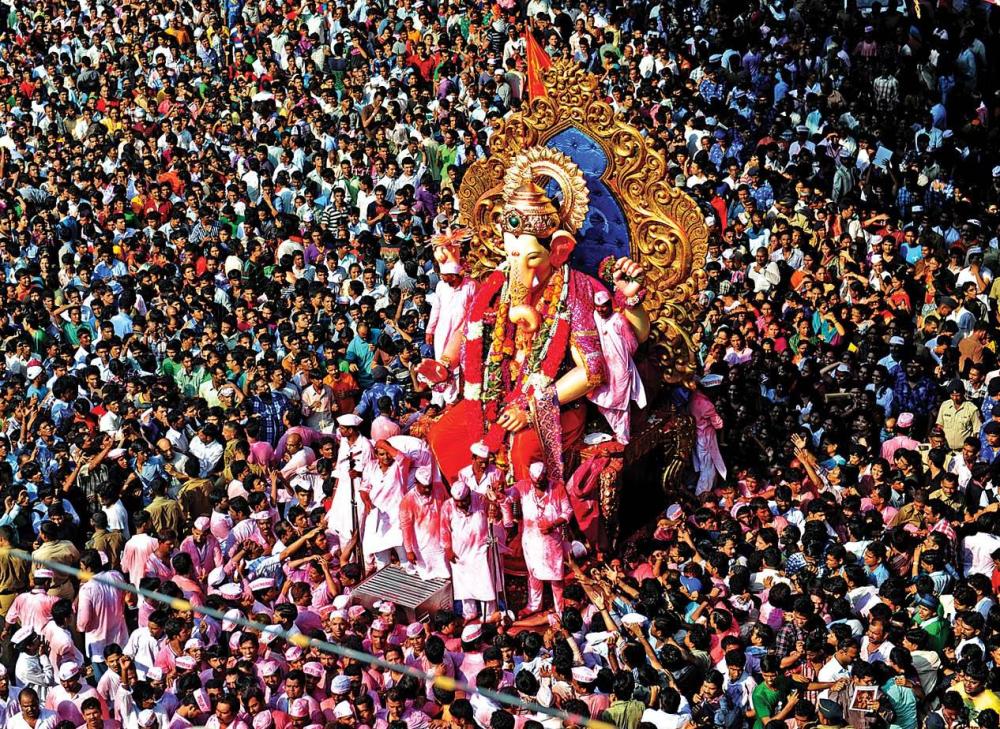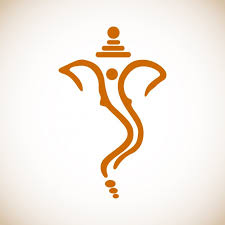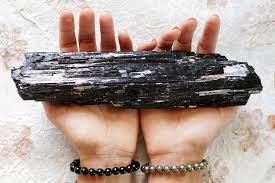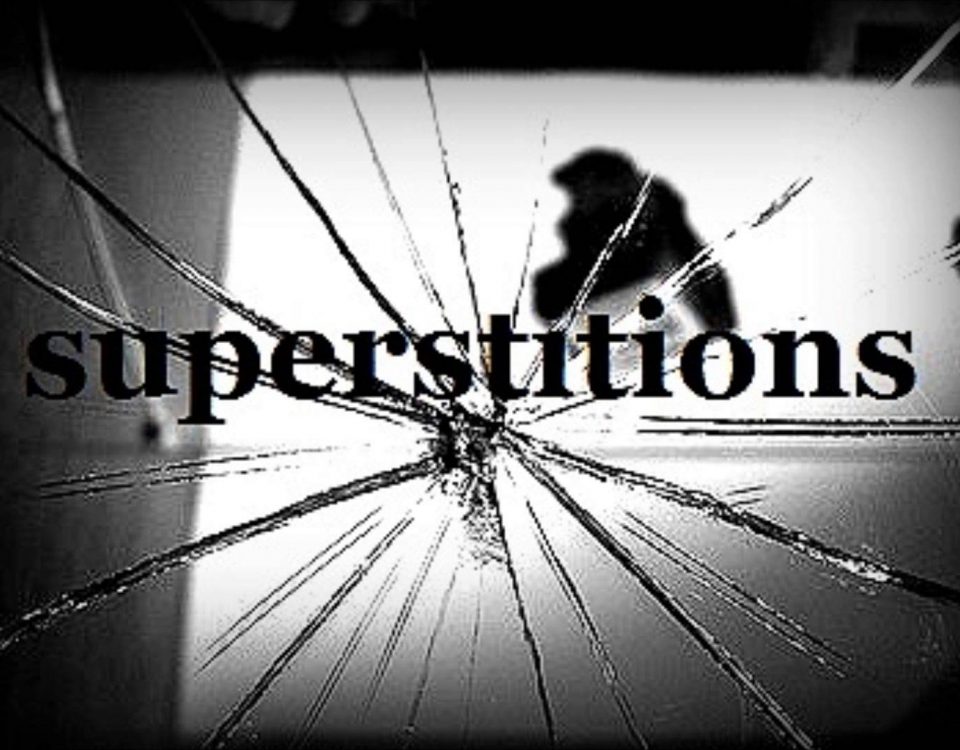
This is the most Powerful Protection against Negative Energies
May 10, 2018
Do you know how healthy is your POOP
May 10, 2018Ganesh or Vinayak Chaturthi can easily be identified as one of the major traditional festivals celebrated by the Hindu community. It is observed in the Hindu calendar month of Bhadrapada, starting on the shukla chaturthi (fourth day of the waxing moon period). The festival lasts for 10 days, ending on Ananta Chaturdashi. Traditionally celebrated as the birthday of Lord Ganesha, the festival marks the return of peace, prosperity, harmony, and abundance with the birth of Lord Ganesha.
As the legendary story goes, Lord Ganesha is the son of Lord Shiva, the God of Destruction and Parvati, Shiva’s companion and wife. The cutest and most lovable Indian God, Ganesha or Ganpati, possesses the head of an elephant on which rests an elegant crown.
Ganesa’s each of the four podgy hands joined to a sizable belly hold various symbolic objects like – a Trishul or a trident in one, an Ankush or goad (made from his very own broken tooth) in another, a lotus in the third and modaks, his favorite sweet, in the fourth. Revered as the deity of auspiciousness and wisdom, Lord Ganesha is also famous for being a trickster and for his profound sense of humor.
The belief is that Lord Ganesh was born on the fourth day (Chaturthi) of the bright fortnight of the Hindu lunar month of Magh. Since then, an association between Ganesh and Chaturthi has been established.
An interesting and peculiar tale regarding how Ganesha got an elephant’s head is, that, once while Parvati was bathing, she created a human figure from some sticky substance, gave him life and asked him to guard the door while she bathed. Lord Shiva who just got over a prolonged meditation on Mount Kailash, chose that very moment to drop by and meet his beloved. As he approached the abode of Parvati he was abruptly stopped by the man-god, who Parvati had posted at the door. Outraged by the cheek of this stranger, Shiva cut off his head only to discover moments later that he had killed Parvati’s son!! For fear of enraging his wife, Shiva immediately dispatched his ganas (attendants) to get him the head of the first living creature they could find. As destiny had it in its stores, the first living creature happened to be an elephant. As instructed, the head was chopped off and brought back to Shiva, who placed it on Parvati’s son’s body, bringing him back to life.
This elephant-headed god was welcomed into the first family of the Hindu heavens and named Ganesha or Ganapati, which literally means the chief of the ganas or the attendants of Shiva. Ganesha is the foremost god of the Hindu pantheon. This brave guardian of the door to Parvati’s bath is beheld today as the most auspicious God of new beginnings. He is worshiped during every festival and before people undertake a journey or embark upon a new venture. You will also see him carefully guarding entrances to temples and homes, protecting all from the evil eye of YAMA.
According to the noted historian Shri Rajwade, the earliest Ganesh Chaturthi celebrations can be traced back to the times of the reigns of dynasties as Satavahana, Rashtrakuta, and Chalukya. Historical records reveal that Ganesh Chaturthi celebrations were initiated in Maharashtra by Chatrapati Shivaji Maharaja, the great Maratha ruler, to promote culture and nationalism. Since then it has continued to claim its dominance over all other festivals of Maharashtra. There are also references in history to similar celebrations during Peshwa times. It is believed that Lord Ganapati was the family deity of the Peshwas. After the end of Peshwa rule, Ganesh Chaturthi remained a family affair in Maharashtra from the period of 1818 to 1892.
 Bal Gangadhar Tilak, an Indian nationalist, social reformer and freedom fighter, who was greatly esteemed by the Indian people, especially of Maharashtra, brought back the tradition of Ganesh Chaturthi and reshaped the annual Ganesh festival from private family celebrations into a grand public event.
Bal Gangadhar Tilak, an Indian nationalist, social reformer and freedom fighter, who was greatly esteemed by the Indian people, especially of Maharashtra, brought back the tradition of Ganesh Chaturthi and reshaped the annual Ganesh festival from private family celebrations into a grand public event.
Tilak saw how Lord Ganesha was worshiped by the upper stratum as well as by the ranks of India, with his vision he realized the cultural importance of deity Ganesha and popularised Ganesha Chaturthi as a National Festival “to bridge the gap between the Brahmins and the non-Brahmins and find an appropriate context in which to build a new grassroots unity between them” in his nationalistic striving against the British in Maharashtra.
It was around 1893, during the nascent stages of Indian nationalism, that Tilak began to organize the Ganesh Utsav as a social and religious function. He was the first to put in large public images of Ganesha in pavilions and establish the tradition of their immersion on the tenth day. The festival facilitated community participation and involvement in the form of learned discourses, dance dramas, poetry recitals etc. It served as a meeting place for common people of all castes and communities, at a time when all social and political gatherings were forbidden by the British Empire for fear of conspiracies to be hatched against them. An important festival during the Peshwa era, Ganesha Chaturthi acquired at this time a more organized form all over India largely due to Tilak’s efforts.
Since then, Ganesh Chaturthi has been celebrated throughout Maharashtra as also in other states with great community enthusiasm and participation. With the independence of India in 1947, it was proclaimed to be a national festival.
Over the years Ganesh Chaturthi has become so popular that the preparations begin months in advance. Days before the actual worship, homes are cleaned and huge stalls erected at street corners to welcome Lord Ganesha. Lord Ganesha is worshiped with great devotion and prayer services are performed daily. The duration of the Lord’s stay varies from place to place; once the worship is complete, the statues are carried on decorated floats to be immersed in the sea after one, three, five, seven and ten days. Thousands of processions converge on the beaches to immerse the holy idols in the sea. This procession and immersion are accompanied with dancing and the sound of exciting drum-beats, devotional songs, and exploding firecrackers. As the idol is immersed amidst loud chants of
“Ganpati bappa morya, pudcha varshi laukar ya” (Hail Lord Ganesh, return again soon next year).

About the Author
Dr. Amitabh Singh is the founder of AadyantaLife and Bio-Energetic & Crystal Healer and Wellness Coach. He provides Alternative and Complementary Healing therapies to difficult ailments including Cancer. He specializes in Mindfulness Meditation Coaching for Corporate and Business Leaders. His thought-provoking Enlightening Lectures.




